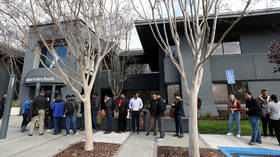SVB's parent company files for bankruptcy

SVB Financial Group, the parent company of the failed Silicon Valley Bank prior to its takeover by regulators last week, has filed for Chapter 11 bankruptcy, the bank said in a statement on Friday.
While Silicon Valley Bank was seized by the Federal Deposit Insurance Corporation after its value collapsed following a bank run last Friday, the rest of SVB Financial Group, which consists of a venture capital and private credit fund, a registered broker-dealer, and about $2.2 billion in liquid assets, will be sold off in an effort to repay creditors and large depositors alike, though it will not cover all who lost money in the collapse, and a legal battle is expected to follow.
Earlier this week, a shareholder lawsuit filed in the US district court for the Northern District of California alleged that several of SVB’s quarterly and annual financial reports had not fully disclosed the risks being communicated by the Federal Reserve between 2020 and 2022 that looming interests rate hikes “had the potential to cause irrevocable damage to the company,” or that the losses thus incurred might trigger a bank run.
While the FDIC only covers customer deposits under $250,000, the administration of President Joe Biden stepped in after SVB’s collapse to guarantee those exceeding that amount, rankling critics who see it as a bailout masquerading as a regulatory action. While the larger deposits will supposedly be covered through an insurance fund paid for by bank fees rather than taxpayer dollars as seen in the 2008 financial crash, an inordinately large percentage – 94% – of SVB’s deposits exceeded the $250,000 cutoff, about twice the typical share at other banks. Senate Republicans pointed out earlier this week that the banks that didn’t fail would be unfairly penalized when their own rates increased to cover the hefty payouts to depositors, costs which would ultimately be passed onto the taxpayer, putting them on the hook for a bailout after all.
New York-based Signature Bank collapsed just days after SVB, triggering fears of a wider contagion even as the president attempted to reassure Americans that their finances were safe. Similar to SVB, 90% of its deposits exceeded the FDIC cap.













